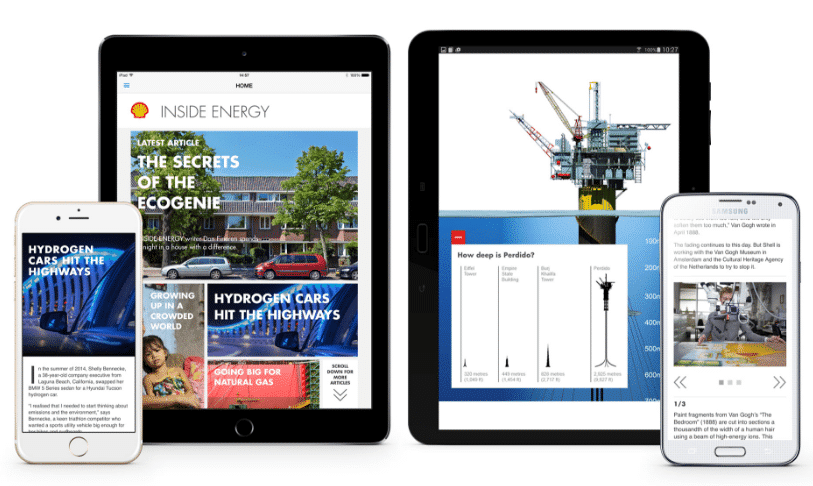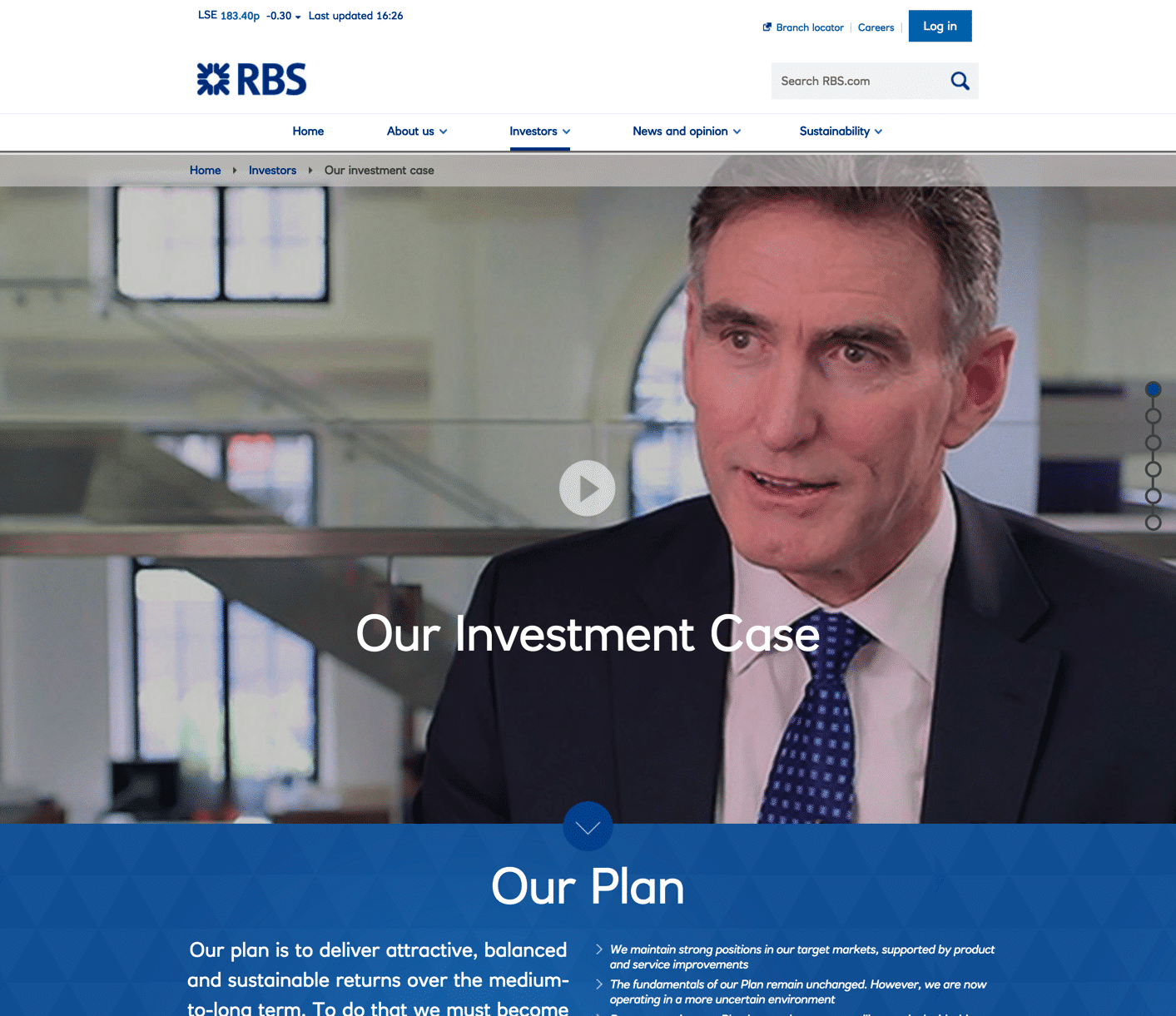


Im heutigen wettbewerbsintensiven digitalen Zeitalter ist digitale Kompetenz einer der wichtigsten Aspekte des Online-Marketings. Um optimale Wirksamkeit zu erzielen, müssen Unternehmen den Zugang zu allen Arten digitaler Plattformen ermöglichen und so das bestmögliche Nutzererlebnis schaffen. Laut einer neuen Studie bieten die meisten Unternehmen nicht das digitale Erlebnis, das sich Verbraucher wünschen und benötigen. Dies ist ein dringendes Signal an Marketingleiter, etwas zu ändern.
Wie in Radley Yeldars herausragende digitale FTSE 350-Umfrage Unternehmen in sensiblen oder stark regulierten Branchen, die sich auf die Leistungsfähigkeit von Unternehmenswebsites konzentrierten, entwickeln sich zu Vorreitern in der digitalen Kommunikation und arbeiten hart daran, transparenter und bekannter zu werden. Dies gilt insbesondere für Pharmaunternehmen, Gesundheitsunternehmen und Energieunternehmen.
Im Branchenvergleich gehören Websites von Finanzdienstleistern mit einem Performance-Score von lediglich 32 % regelmäßig zu den leistungsschwächsten Unternehmen. AstraZeneca hat sich jedoch zum Branchenführer entwickelt und ist die leistungsstärkste Unternehmenswebsite, die erstmals in den Top 10 vertreten ist. Tatsächlich hat sich die Website von AstraZeneca im Vergleich zum Vorjahr um 63 Plätze verbessert, was eine deutliche Verbesserung darstellt. Das Unternehmen erreicht eine außergewöhnliche Performance-Bewertung von 76,8 %, dicht gefolgt vom Vorjahressieger SABMiller sowie anderen Unternehmen wie GSK, Shell und Unilever.
Wichtige Fakten, die in Yeldars Forschung genannt wurden, waren die folgenden:
Die digitale Erfahrung der FTSE 350-Unternehmen ist durchweg schwach geblieben.
Unternehmen, deren Website-Erfahrung bei den Benutzern unter 40 % liegt.
36 % war die durchschnittliche Punktzahl für digitale Inhalte dieser Unternehmen
Nur 15 % der Unternehmen haben es einfach gemacht, Aufgaben wie Bewerbungsformulare auf ihren Websites auszufüllen.
Laut einer Studie von Yeldar befinden sich die effizientesten Unternehmenskommunikatoren tatsächlich unter den FTSE-100-Unternehmen. Im Vergleich dazu liegen einige FTSE-200-Unternehmen weit zurück. Noch wichtiger ist, dass die Kluft zwischen den Spitzenreitern und den abgehängten Unternehmen immer größer wird.
Yeldars Forschung zeigt, dass die einstige Kluft zwischen traditioneller Kommunikation und Marketing nun besteht. Unternehmen versuchen, ihre Geschichte kreativer zu erzählen und allgemeinere Branchenprobleme anzugehen. Die Marken, die sich für die Kampagne einsetzen, äußern ihre Meinung und versuchen, ihre Vorgehensweise zu ändern.
Die wichtigsten Faktoren der Studie von Yeldar betonen sechs Schlüsselindikatoren, die zeigen, dass die erfolgreichsten Unternehmen diejenigen sind, die einen neuen und stärker integrierten Ansatz für die Website-Kommunikation verwenden, wie zum Beispiel:

In der diesjährigen Studie wurde festgestellt, dass die digitale Kommunikation nicht nur geschäftliche Aspekte, sondern auch größere Themen, Herausforderungen und Probleme berücksichtigt. Für Unternehmen verschiedener Branchen ist es wichtig, ihre Probleme zu lösen, um die gewünschten Ergebnisse durch den Einsatz fortschrittlicher Techniken zu erzielen. Unternehmen können an der Lösung von Problemen arbeiten und gleichzeitig Transparenz durch Inhalte fördern, die die erzielten Fortschritte demonstrieren.
Wholefoods ist ein gutes Beispiel. Als Geschäft, das dafür bekannt ist, Naturkost zu höheren Preisen zu verkaufen, wurde Whole Foods in der Vergangenheit wegen des Verkaufs gentechnikfreier Produkte kritisiert und sogar mit einer Sammelklage konfrontiert. Seitdem hat sich das Unternehmen zum Ziel gesetzt, der erste Nationale Lebensmittelkette bietet vollständige Transparenz bei GVO

Die erfolgreichsten Unternehmen der digitalen Kommunikation experimentieren derzeit mit visuellen und bewegten Inhalten, um ihre Rolle im Bereich der digitalen Online-Inhalte auszubauen. Vorreiter dieser Bewegung sind zwei Unternehmen, AstraZeneca und GSK, die einen hocheffizienten Ansatz für visuelle Inhalte verfolgen. Auch zwei namhafte Unternehmen haben sich zu Vorreitern entwickelt, wie Sainsbury's mit seinen videobasierten „Little Stories“ und Tesco mit seinen sozialen Medien Übernahme der Homepage.
 Entdecken Sie die Kunst des Geschichtenerzählens
Entdecken Sie die Kunst des Geschichtenerzählens Der Marken, die die effektivsten digitalen Inhalte, die den Zweck und die Ehrlichkeit der Herausforderungen, mit denen sie sich auseinandersetzen, aufzeigen. Diese Unternehmen betrachten ihre veröffentlichten digitalen Inhalte nicht nur als eine weitere Version ihrer traditionellen Pressemitteilungen. Vielmehr werden die Geschichten so präsentiert, dass sie ihre Kernanliegen verdeutlichen und das Interesse ihrer Leser wecken, indem sie sich vom Unternehmenskontext abheben. Interessante Beispiele für diese Art von Aktivitäten sind „Behind the Science“ von GSK und „Inside Energy“ von Shell. Beide sind eindrucksvolle Beispiele digitalen Storytellings, die die Ziele ihrer Macher widerspiegeln.

Die weniger effektiven Kommunikationskanäle nutzen den Investor-Relations-Bereich auf Unternehmenswebsites lediglich als Informationsquelle und nicht als Mittel, die Aufmerksamkeit ihrer Zielgruppe zu gewinnen. Die effektivsten Unternehmenswebsites hingegen entwickeln aktiver eine eigene Investor-Relations-Story, die wichtige Informationen aus Präsentationen und Berichten aufgreift und gleichzeitig die Zielgruppe erweitert. Insbesondere Banken nutzen Websites, um ihr Potenzial auszuschöpfen und dem Wunsch nach mehr Offenheit und Transparenz nachzukommen. Ein gutes Beispiel hierfür ist die Seite „Investment Case“ der Royal Bank of Scotland, die beschreibt, wie die Chancen für private und institutionelle Anleger ein wirkungsvolles Beispiel darstellen.

Karriereinhalte sind der meistbesuchte Bereich jeder Unternehmenswebsite. Erfolgreiche Unternehmenswebsites präsentieren diese Inhalte immer innovativer. Früher waren Karriereinhalte traditionell auf Microsites, lokale Websites und sogar Social-Media-Kanäle verteilt. Obwohl es verschiedene Kanäle gibt, arbeiten die einflussreichsten Kommunikationsunternehmen verstärkt daran, ihre Nutzer über ihre Unternehmenswebsite zu binden – nicht nur über den Karrierebereich. Im Wesentlichen zeigt sich, dass die erfolgreichsten Websites in der Lage sind, Inhalte effektiv zu integrieren, die die Mitarbeiterreise unterstützen und gleichzeitig ein stärkeres Engagement in allen Aspekten des Rekrutierungsprozesses schaffen.

Die weniger effektiven Kommunikatoren nutzen Investor-Relations-Bereiche auf Unternehmenswebsites eher als Informationsquelle und nicht als Mittel, die Aufmerksamkeit ihrer Zielgruppe zu gewinnen. Die effektivsten Unternehmenswebsites hingegen verfolgen einen aktiveren Ansatz bei der Erstellung einer eigenen Investor-Relations-Story, die wichtige Informationen aus Präsentationen und Berichten aufgreift und gleichzeitig die Zielgruppen erweitert. Insbesondere Banken nutzen Websites, um ihr Potenzial auszuschöpfen und dem Wunsch nach mehr Offenheit und Transparenz gerecht zu werden. Ein gutes Beispiel zu sein ist „Investment Case“ der Royal Bank of Scotland Seite, die beschreibt, wie die Chance für Privat- und institutionelle Anleger ein wirkungsvolles Beispiel darstellt.

"*" kennzeichnet Pflichtfelder

"*" kennzeichnet Pflichtfelder

"*" kennzeichnet Pflichtfelder
Hinterlasse einen Kommentar
Sie müssen eingeloggt um einen Kommentar zu posten.